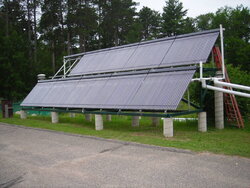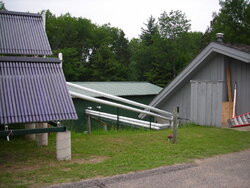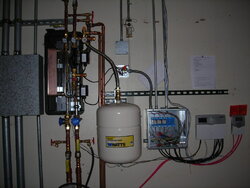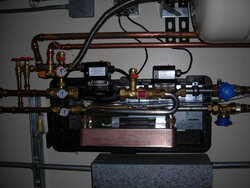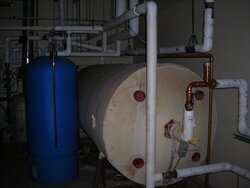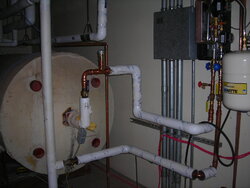Two days ago the pros (plumbers, electrician and tech support) finished the install of the re-designed evacuated tube system at Deep Portage and completed the initial programming of the controller. This is a 300 tube system, 10 manifolds of 30 tubes each, and is designed to provide domestic hot water (with LP hot water heater backup and supplement) to an environmental learning center that serves around 10,000 visitors per year in a 56,000 sq ft facility. The initial design and install had serious deficiencies based on the operating experience which resulted in shutting the system down last year. I did the new design based on experience with the deficient system and studying the literature, and I also advised the plumbers and electrician as they did their work.
I will post pictures shortly and provide performance data once the system is fully operational. There still is some controller programming to fine tune, but initial indications are that the system performance deficiencies have been corrected and the system should work as well as possible subject to some minor constraints which were unavoidable under the circumstances of the facility.
I will post pictures shortly and provide performance data once the system is fully operational. There still is some controller programming to fine tune, but initial indications are that the system performance deficiencies have been corrected and the system should work as well as possible subject to some minor constraints which were unavoidable under the circumstances of the facility.


